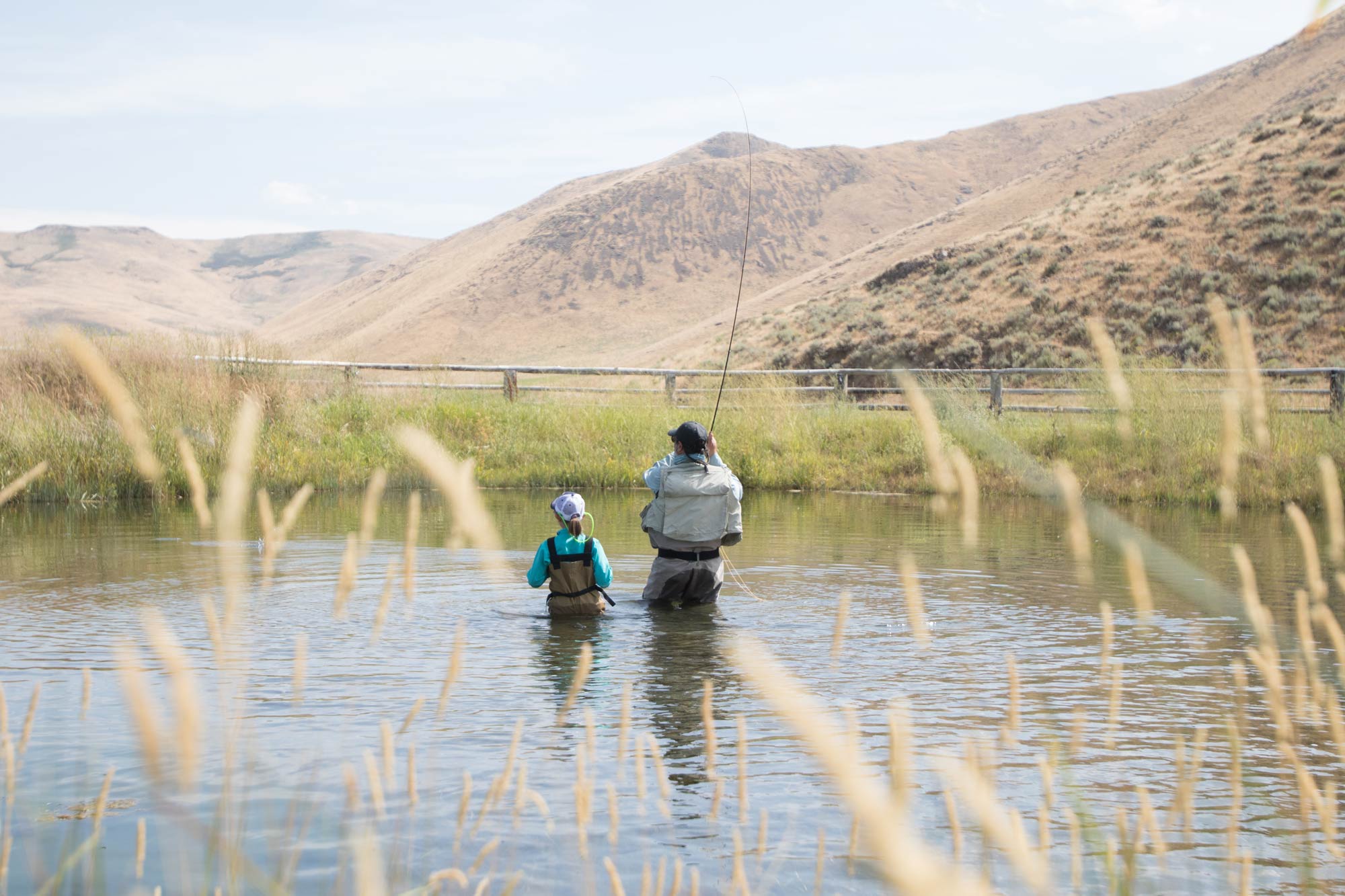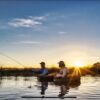“Instructions for living a life: Pay attention. Be astonished. Tell about it.”
– Mary Oliver
Day in the life of an angler: Observe the vicissitudes of the barely visible. Revel in the sublime beauty of trout and their environs. Sit around the shop, beverage in hand, and tell about it.
The Big Wood
The Wood continues to fish well. The best fishing remains the morning into the early afternoon with the hot, late afternoon being the least productive. With lower flows, anglers need to focus on presentation and stealth to remain successful. When approaching trout lies, be more like a heron and less like a water buffalo. And rather than casting long lines, shorten your presentations to improve hook setting chances. In August, you will still find trout in shallow water looking for oxygen and food; to fool these seasoned trout you need to make your first presentation count. As for bugs, you will find Caddis, Western Quills, small Crane flies, PMDs, Tricos, Baetis, Spruce Moths, and hoppers. Remember, with the lower than average flows, the fish need to be returned immediately to the water.
Silver Creek
While the daytime temperatures have moderated, please be aware that low flows and high-water temps impact the dissolved oxygen content. The Nature Conservancy kindly asks that anglers avoid overly stressing fish and be careful when catching and releasing them. The morning fishing on the Creek continues to be productive with Tricos, Baetis, and intermittent Callibaetis spinners. While early surface feeders can be found, the best action is between 9 and 11 AM. If the wind blows the hatch off, nymphing with small drab Baetis and Trico nymphs can save the day. If you decide to stay into the afternoon, look for Callibaetis and some damsels in the sloughs and pond. The hopper fishing is also starting to pick up as well. Remember, when fishing the Preserve, the visitor center remains closed. Look for posted information at each access allowing you to sign in via your phone with a QR code or by texting “Visitor” to (833) 593-0682.
The Big Lost Upper
The upper reaches of the Lost are quite low, and the fish are spread out near the deeper runs and in the aerated riffles. Patient anglers who appreciate solitude will still enjoy a day spent on this water. The lower reaches of the Upper Lost, below the North Fork, require lots of hiking, but anglers willing to put forth the effort will be rewarded. Look for similar hatches to the Wood and keep in mind that the upper Lost trout often prefer a well presented dry.
The Big Lost Lower
Below Mackay, the flows continue to dance around. At the moment, they are up again to over 400 CFS. While wading at this level can be tricky, strong waders should be able to find places to cross. As for the fishing, it has been good, especially in the morning. During the early to mid-mornings you will see good numbers of Tricos and a handful of Baetis. If you can find a spot where the bugs collect and the fish can hold, you will find surface success. Of course, nymphing is also productive. You might also try skating a Crane Fly.
The Salmon
The fishing remains good on both the upper and lower Salmon River. Try a Spruce moth pattern along the stretches of river lined with evergreens. Hoppers are also quite effective. Even though the flows are quite low, floating the lower stretches is still an option.
Southfork of the Boise
Flows bumped a bit last week, but are back to 1200 CFS. Anglers are finding success with hoppers and Mormon crickets from drift boats. Some Pink Alberts are hatching during the afternoon and lots of caddis in the evenings.
Local Ponds
Gaver’s Lagoon, Penny, and Lake Creek ponds have been stocked and make a great location for a family picnic.
Stillwater Options
If you are looking for a unique alternative, try one of our local reservoirs. Magic, Mackay, and the Little Wood reservoirs can be fished either from shore, a boat, or a float tube; however, please be aware that strong afternoon winds can make boating/ tubing unsafe. As for techniques in all these reservoirs, try pulling a team of small leech patterns in black, brown or olive on an intermediate or type 3 or 5 sinking line. Also, suspending a series of nymphs at the right depth can also be effective.
Big Wood & Warm Springs: Chubby Chernobyl | Iron Lotus | SRS Bullet French Nymph | Duracell Jig 12-18 | Jake’s Perdigon 14-18 | Tungsten Nemec Stone | Pat’s Rubber Legs | Stone Daddy 8 | Bishop’s Dynamite | DB Zebra Midge in black, red, or olive | King Prince
Big Lost: Crane Flies | Chubby Chernobyl | PMDs | Yellow Sallies | Iron Lotus | SRS Bullet French Nymph | Duracell Jig 12-18 | Jake’s Perdigon 14-18 | Tungsten Nemec Stone | Pat’s Rubber Legs | Stone Daddy 8 | Bishop’s Dynamite | DB Zebra Midge in black, red, or olive | King Prince
Salmon: Chubby Chernobyl | Duracell Jig 12-18 | Jake’s Perdigon 14-18 | Tungsten Nemec Stone | Pat’s Rubber Legs | Stone Daddy 8 | Bishop’s Dynamite | King Prince
South Fork of the Boise: Chubby Chernobyl | Iron Lotus | SRS Bullet French Nymph | Duracell Jig 12-18 | Jake’s Perdigon 14-18 | Tungsten Nemec Stone | Pat’s Rubber Legs | Stone Daddy 8 | Bishop’s Dynamite | DB Zebra Midge in black, red, or olive | King Prince
Silver Creek: Damsels | PMD | Callibaetis | Baetis | Tricos | Griffiths Gnats | Parachute Midge | Iron Lotus | SRS Bullet French Nymph | Jake’s Perdigon 14-18 | DB Zebra Midge in black, red, or olive
Stillwater Flies: Seal Buggars | Balanced Leeches | Bouface Leech | Snowcone Chironomids | Egg Patterns | Prince Nymph | Squirmy Worms
| Silver Creek Big Wood The Big Lost South Fork of the Boise Salmon River |
50.8 cfs 131 cfs 418 cfs 1180 cfs 880 cfs |




